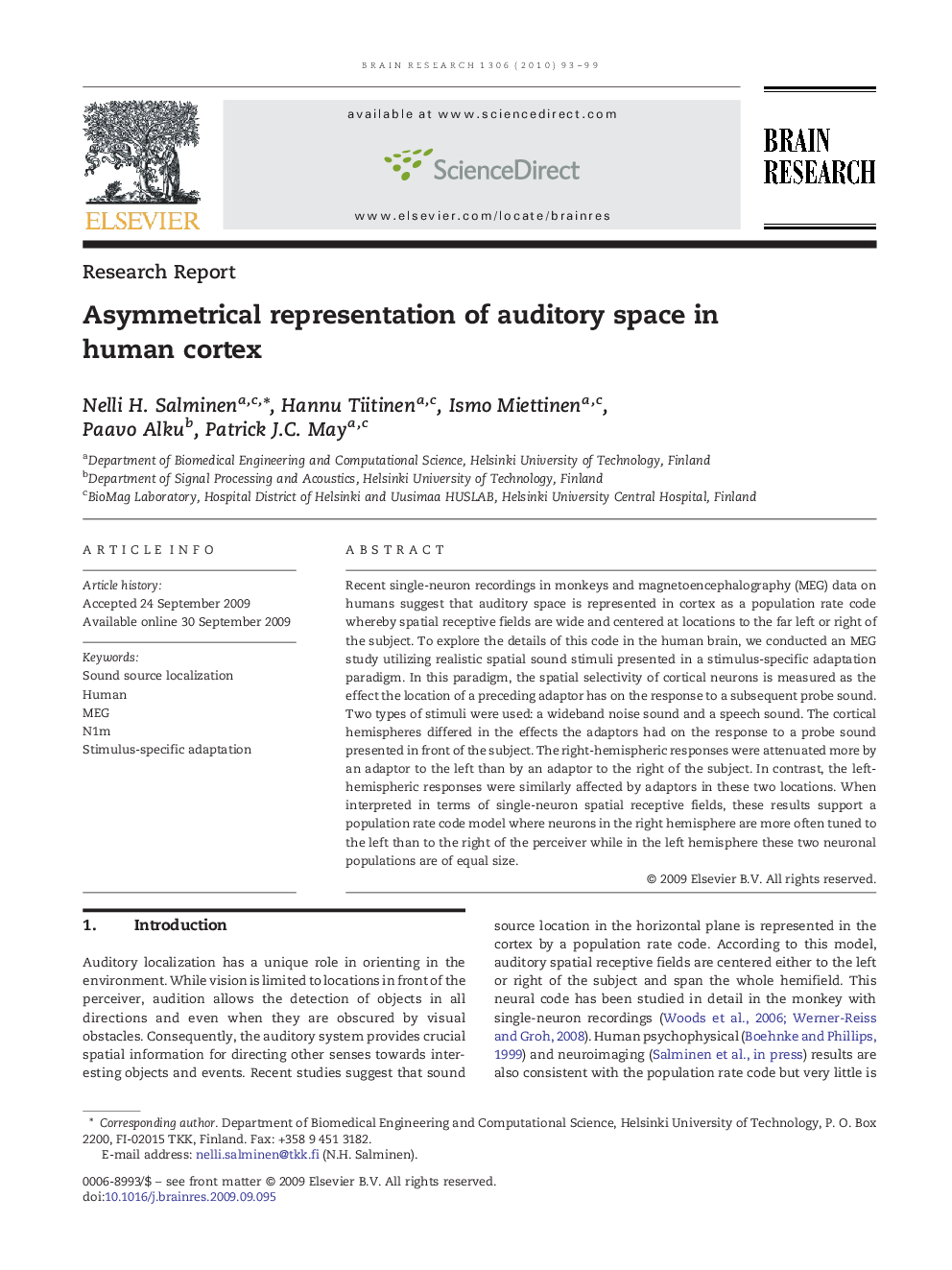| کد مقاله | کد نشریه | سال انتشار | مقاله انگلیسی | نسخه تمام متن |
|---|---|---|---|---|
| 4327554 | 1614133 | 2010 | 7 صفحه PDF | دانلود رایگان |

Recent single-neuron recordings in monkeys and magnetoencephalography (MEG) data on humans suggest that auditory space is represented in cortex as a population rate code whereby spatial receptive fields are wide and centered at locations to the far left or right of the subject. To explore the details of this code in the human brain, we conducted an MEG study utilizing realistic spatial sound stimuli presented in a stimulus-specific adaptation paradigm. In this paradigm, the spatial selectivity of cortical neurons is measured as the effect the location of a preceding adaptor has on the response to a subsequent probe sound. Two types of stimuli were used: a wideband noise sound and a speech sound. The cortical hemispheres differed in the effects the adaptors had on the response to a probe sound presented in front of the subject. The right-hemispheric responses were attenuated more by an adaptor to the left than by an adaptor to the right of the subject. In contrast, the left-hemispheric responses were similarly affected by adaptors in these two locations. When interpreted in terms of single-neuron spatial receptive fields, these results support a population rate code model where neurons in the right hemisphere are more often tuned to the left than to the right of the perceiver while in the left hemisphere these two neuronal populations are of equal size.
Journal: Brain Research - Volume 1306, 8 January 2010, Pages 93–99